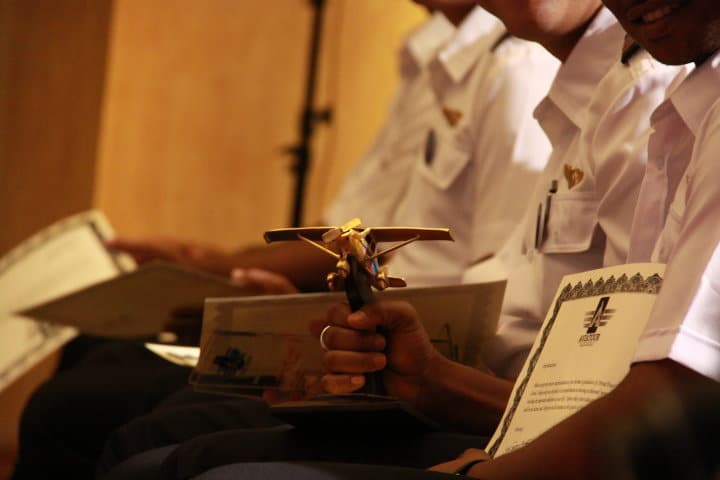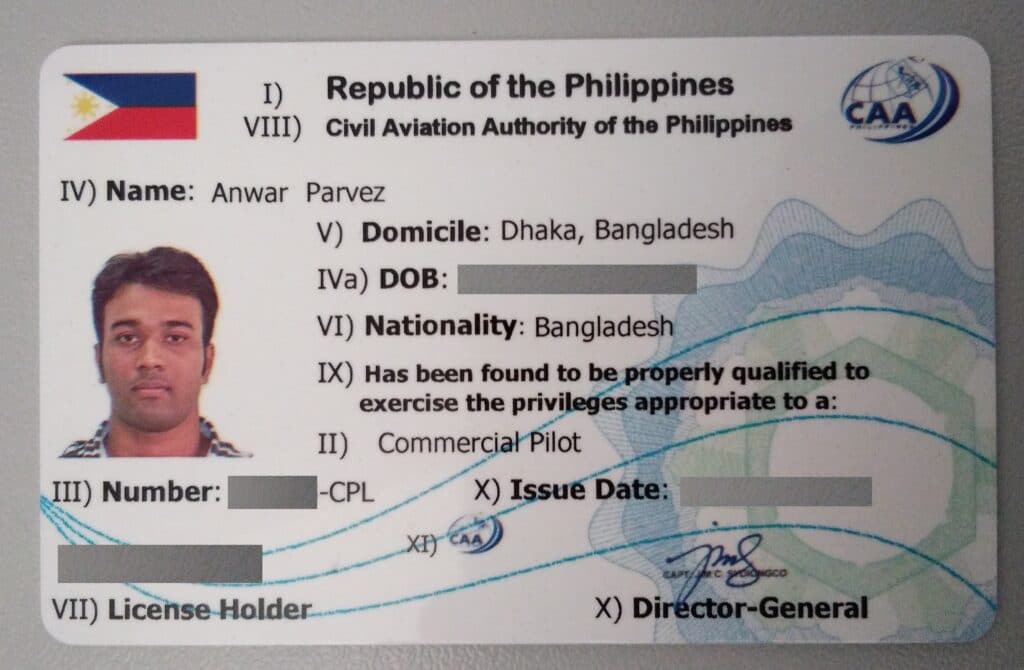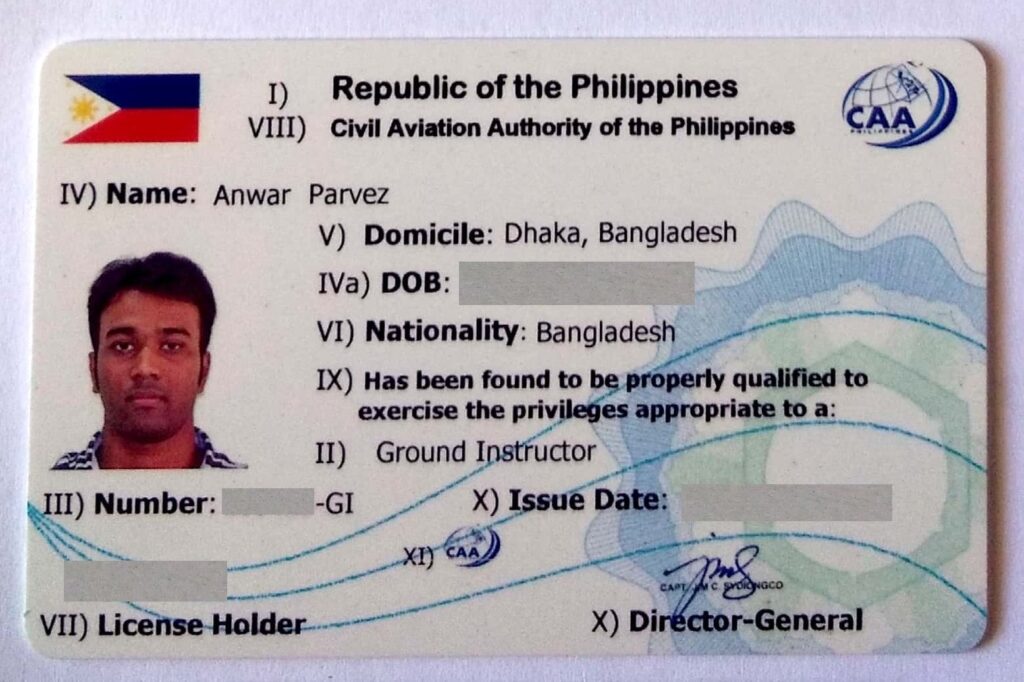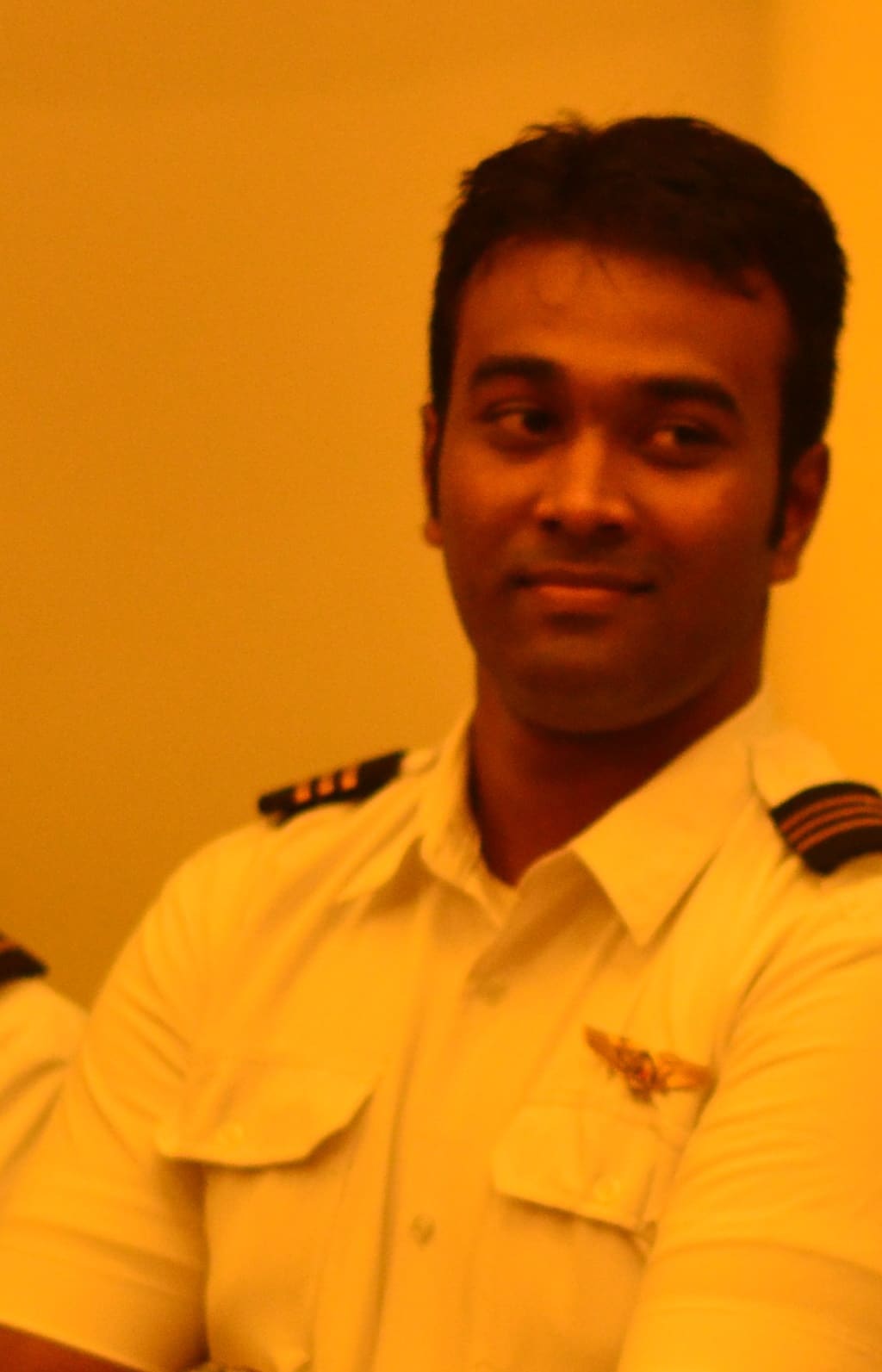What are the different types of Pilot Licenses?

This is one of the most common questions I have received from some of the students “Sir, What are the type of Pilot licenses we shall work for during our training?”
Well, This blog is for those who would like to be pilots to start flying careers in the near future.
Civil Aviation Authority normally certifies a few Categories of Pilot Licenses. I will discuss here only about the important ones. My discussion is from the Civil Aviation regulation of the Philippines (CAR) and the Annexes from the International Civil Aviation Organization (ICAO).
TYPES OF PILOT LICENSES
(1)Student pilot license/Authorization (SPL or SPA)
(2) Private pilot license (PPL);
(3) Commercial pilot license (CPL);
(4) Airline Transport pilot license (ATPL);
(5) Multi-crew Pilot License (MPL);
(6) Glider pilot license; and
(7) Free balloon pilot license.
TYPES OF PILOT RATINGS
(1) Instrument ratings (IR rating)
(2) Instructor ratings
(i) Flight Instructor (FIL)
(ii) Instructor for additional class/type/instrument ratings
(iii) Ground Instructor (GIL)
(3) Type ratings in the following aircraft: C-152, C-172, C-130, A320, B777
(4) Class Ratings ( only in USA/CANADA), Philippines allows only Type rating.
(i) Single-engine land – airplane
(ii) Single-engine sea – airplane
(iii) Multi-engine land – airplane
(iv) Multi-engine sea- airplane
Above all those Pilot Licenses and Ratings, let’s discuss only the important ones you need to begin with.
Student Pilot License (SPL or SPA)
This pilot license is needed to be able to fly an airplane as a student pilot. You will need this license until you fly 40 to 50 hours of total flight hours. Then you can apply for a PPL license. An SPL is valid for 24 months. Pilot Medical Certificate is also required for having SPL. Usually, you will get them together.
Private Pilot License (PPL)
Once you have a private pilot license, you will have the privileges such as exploring different airports flying solo, taking part in search and rescue missions, and other personal activities. But a private pilot cannot fly for hiring and getting paid as a pilot.
To get this license you need to pass all the PPL ground subjects (Usually 10 subjects). You also need to have a minimum of 40 hours of flying experience. Your flying hours can have a minimum of 20 hours of dual flight time with a certified flight Instructor, at least 10 hours of solo flight, and the remaining 10 hours of which can be solo flights or dual. The requirements for having the license are:
- 17 years of age
- 10th-grade Graduate (12th grade for Bangladesh)
- 2nd Class Medical Certificate
- Flight hours (at least 40 hours)
- Police Clearance
- Passed CAAP Knowledge test (10 subjects)
- Passed CAAP Practical Flight Test and Oral Examination (Check ride)
- Radio License (Radiotelephony)
Commercial Pilot License (CPL)
In order to have a Commercial Pilot license, you need to have a Private Pilot license first. It means you can not become a commercial pilot if you do not have a private pilot license. CPL will help you to get a job and get paid as a pilot. You need at least 150 hours of total flying hours if you have flown from a Flying School/Academy or 200 hours if flown from a flying club. The requirements to have a CPL license are:
- 18 years of age
- 10th grade High School (12th grade for Bangladesh)
- 1st Class Medical Certificate
- Flight hours ( 150 hours from school / 200 hours from club)
- Police Clearance
- Passed CAAP Knowledge test (10 subjects)
- Passed CAAP Practical Flight Test and Oral Examination (Check ride)
- English Language Proficiency Level 4
- Radio License

Airline Transport Pilot License (ATPL)
ATPL is the highest level of pilot license. You can fly as a pilot in command of multi-crew aircraft normally in the airline industry. You can also apply for ATPL in general Aviation. You need to have at least 1,500 hours of flying hours with a minimum of 200 hours night flying to get this license. The requirements to have ATPL are:
- 21 years old
- Commercial Pilot License (CPL)
- Class 1 Medical Certificate
- Flying hours (at least 1,500 hours with 200 hours night flying in the Philippines)
- Certificate of ATPL Ground school
- Radio License
- English Language Proficiency (level 4)
NOTE: You do not need an ATPL license to apply for a job in Airlines for the First officer (FO) position. You can have your ATPL for free after a couple of years of flying experience in the airlines.
Instrument Rating (IR)
An Instrument Rating (IR) will allow you to fly in the low-visibility conditions which are called IFR condition ( Ex: Night Flying, or Flying inside the clouds) In order to have Instrument Rating, you need to have a Private Pilot license first. You need at least 40 hours of total Instrument hours. You can fly 10 hours in actual aircraft and 30 hours in the flight simulator but I highly recommend flying 20 hours in actual aircraft and 20 hours in a flight simulator in order to become an efficient pilot. The requirements to have IR ratings are:
- PPL License
- 2st Class Medical Certificate
- Flight hours ( 40 hours)
- Passed CAAP Knowledge test (1 subject)
- Passed CAAP Practical Flight Test and Oral Examination (Check ride)
- English Language Proficiency Level 4
- Radio License

Ground Instructor Rating (GIL)
This rating will allow you to teach all the subjects (usually 9 subjects) to pass all the Civil Aviation Knowledge for PPL, CPL, IR, ATPL, MPL. Ground Instructors are considered to be one of the most knowledgeable people in the Aviation Industry because they are continuously teaching Aviation theory and keeping themselves updated. You can not become a good pilot and demonstrate good flying skills if you do not acquire good Knowledge of Aviation Theory.
The requirements to have GIL ratings are:
- CPL License
- 2st Class Medical Certificate
- Ground school observation of 500-700 hours for PPL, CPL, IR, MER, ATPL (Number of hours Can vary)
- Demonstrate teaching Capability at least 20 hours for each subject total of 200 hours (10 subjects) with a Civil Aviation Check Pilot.
- Passed CAAP Knowledge test (Principle of teaching)
- English Language Proficiency Level 4

Flight Instructor Rating (FIL)
In order to have a Flight Instructor Rating, you need to have a Commercial Pilot license with a total of 200-250 hours of minimum flying hours first. Flight instructors are considered to be one of the most skilled pilots in the Aviation industry who can demonstrate high-performance flying maneuvers.
The requirements to have FIL are:
- 21 years of age
- CPL license
- 1st Class Medical Certificate
- 30 to 50 hours of Right seat Flying Experience (Total of 200-250 hours)
- Passed CAAP Knowledge test (Principle of teaching)
- Passed CAAP Practical Flight Test and Oral Examination (Check ride)
- English Language Proficiency Level 4
- Radio License

Multi Engine Rating (MER)
This rating allows pilots to fly an airplane with more than One engine (High-Performance Air crafts). These air crafts fly at faster speeds and these air crafts are also expensive to fly because the operation and maintenance cost for Multi-Engine aircraft is high. This rating is very important for the Airline’s Candidates before they start to join Type rating (Ex: A320, B737). Some countries hire pilots in their Airlines without even any Multi-Engine experience.
The requirements to have MER are:
- 17 years of age
- PPL license
- 2st Class Medical Certificate
- 10 hours of minimum flying hours.
- Passed CAAP Knowledge test (POH for the aircraft such as Barron 55, Piper Seneca II)
- Passed CAAP Practical Flight Test and Oral Examination (Check ride)
- English Language Proficiency Level 4
- Radio License
I hope you guys have some basic ideas about pilot Licenses under CAA by now already. But what if you would like to have your training somewhere from Europe (EASA standards)? because I also receive many questions about that. let’s discuss that in a short video here.
The training is actually more costly in European countries. you might be spending around 100K Usd – 150k Usd for an Integrated pilot training program. I will discuss that in more detail in my other blog.
If there are more questions, feel free to write a comment below.
AUTHOR
Capt. Anwar Parvez
Bangladeshi Flight Instructor (CFI / CGI)


What is CAAP knowledge test? Are CAAP and ATO different test? What’ll be the question asked there? Where have to give this test? Please tell me about this in details.
In order to know more about the CAAP knowledge test, you need to enroll in a flight school first and study 10 subjects in your PPL ground school. You may also look for the “Jepessen Private Pilot” book for study reference. Thanks
fabulous
I visited several websites however the audio quality for audio songs present at this website is truly excellent. Victoria Brendis Gurevich
Hey! I could have sworn I’ve been to this blog before but after checking through some of the post I realized it’s new to me. Nonetheless, I’m definitely happy I found it and I’ll be book-marking and checking back often!
Thanks
This is my first time visit at here and i am truly happy to read all at one place. Frieda Allen Wymore
This very blog is no doubt entertaining and besides diverting. I have picked helluva helpful tips out of this source. I ad love to go back every once in a while. Thanks a bunch! Sybila Pete Lavern
Excellent article. I definitely appreciate this site. Continue the good work! Roshelle Mayer Nero